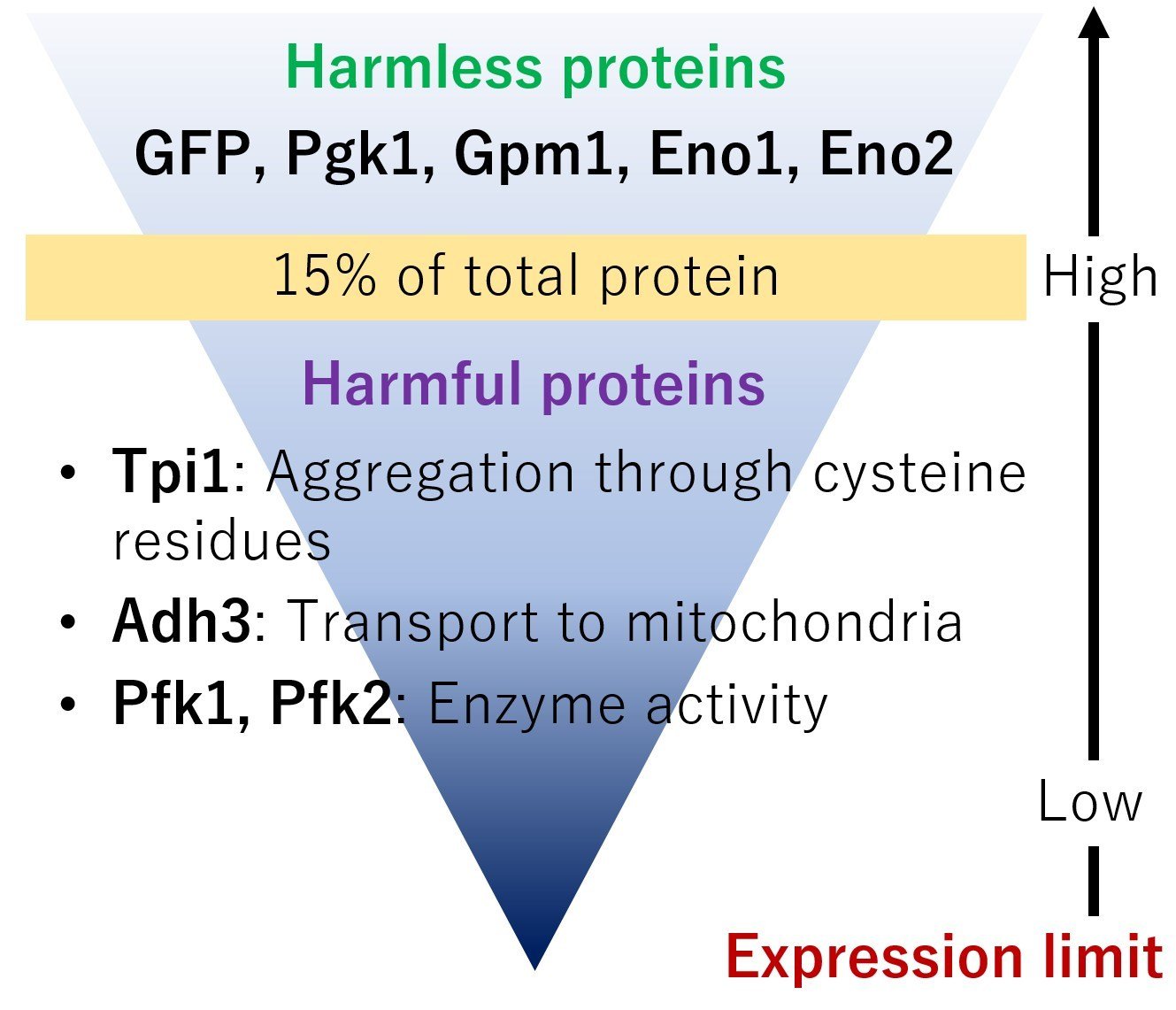Saturday, 17 January 2026
Researchers estimate appropriate protein intake
In a recent study published in eLife, scientists at Okayama show how proteins can hamper an organism’s growth Biochemists have shown that very high protein levels can be harmful to…

In a recent study published in eLife, scientists at Okayama show how proteins can hamper an organism’s growth
Biochemists have shown that very high protein levels can be harmful to cells in the human body. However, exactly which proteins fall under this category remains a mystery. Mr.Yuichi Eguchi(graduate student) and Associate Professor Hisao Moriya’s research team at Okayama University recently reported a framework for discriminating between which proteins are toxic at excessive levels and which are not.
The theory behind this phenomenon, also known as the protein burden, is that accumulation of excessive protein within the cell will deplete the cell of resources, such as energy. The limit required to reach this burden though, is not the same for all proteins. Green fluorescent protein (GFP) is a harmless protein artificially introduced into cells for visualizing the insides of the cell.
When GFP levels were increased within yeast cells, they found that GFP up to 15% of total protein content was harmless to the cells. Using this measure as a standard, Associate Professor Hisao Moriya’s team set out to estimate the burden limit of functional proteins in the cells. 29 proteins essential for energy production were subsequently over-produced.
While many of these proteins also had limits close to 15%, suggestive of their harmless nature, some of the proteins showed growth retardation and other unpleasant effects at lower levels. One such protein was found to accumulate within the mitochondria. Clogging the mitochondria prevents cells from producing oxygen.
Another protein was found to undergo structural changes and aggregate into big pieces. Another reason for some of these proteins having a low burden limit, was due to metabolic disturbances induced when they were produced even slightly higher than usual. When these proteins were inactivated by mutations, their burden limit increased. Lastly, the researchers also found that certain proteins showed growth retardation, even at very low levels. Further investigation revealed that such proteins are programmed to remain at inherently low levels. Therefore, even small changes to their concentrations can be dangerous.
This study paved a framework for biologists to make distinctions between proteins based on how toxic they are when present in abnormal amounts. These differences could be attributed to the function, structure or genetic programming for that protein.
Scientists can hope to use this framework to investigate proteins that are associated with diseases such as Alzheimer’s disease or Parkinson’s disease.
Technology
Bringing PFAS testing to the point of need
Jan 16, 2026 | Australia
Study finds Magtein enhances memory, reaction time and heart health markers
Jan 15, 2026 | Company News
Walmart and Google turn AI discovery into effortless shopping experiences
Jan 15, 2026 | Company News
Food Testing
Bringing PFAS testing to the point of need
Jan 16, 2026 | Australia
IMCD opens a Food & Nutrition Laboratory in Cologne
Jan 08, 2026 | Company News
La Trobe University Develops Portable Biosensor to Detect PFAS in Water
Jan 08, 2026 | Australia
More Popular
Amar Pure Gold to invest Rs 250 Cr in Agro-Food Park in Himachal Pradesh
Jan 16, 2026 | Company News
Franke launches new A Line in Southeast Asia and opens regional flagship showroom in Singapore
Jan 16, 2026 | Beverages
EXBERRY plant-based colour supplier GNT earns top sustainability award
Jan 16, 2026 | Awards





